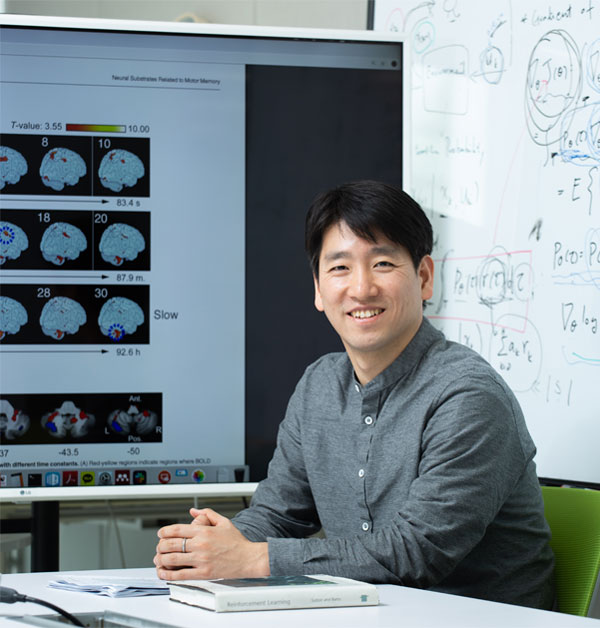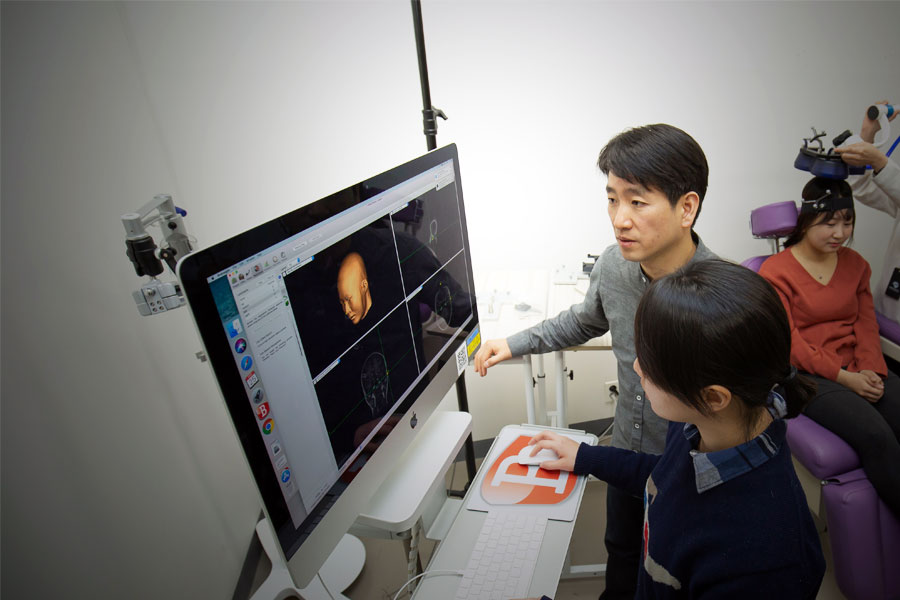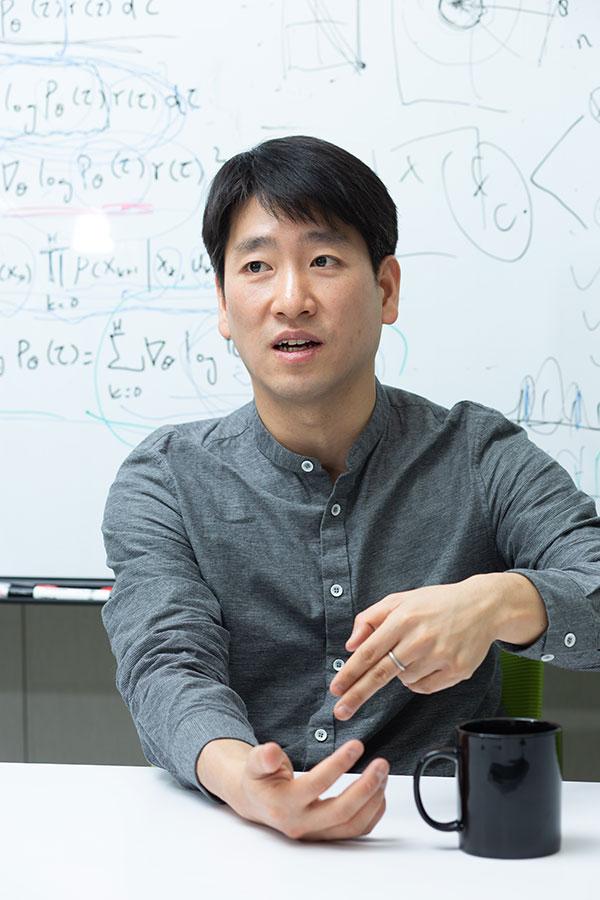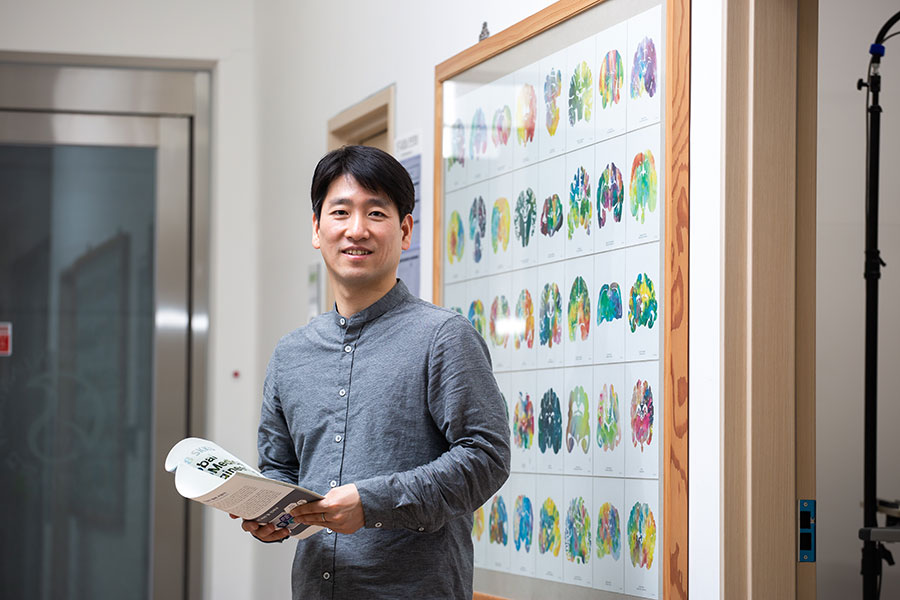주메뉴
- About IBS 연구원소개
-
Research Centers
연구단소개
- Research Outcomes
- Mathematics
- Physics
- Center for Underground Physics
- Center for Theoretical Physics of the Universe (Particle Theory and Cosmology Group)
- Center for Theoretical Physics of the Universe (Cosmology, Gravity and Astroparticle Physics Group)
- Dark Matter Axion Group
- Center for Artificial Low Dimensional Electronic Systems
- Center for Theoretical Physics of Complex Systems
- Center for Quantum Nanoscience
- Center for Exotic Nuclear Studies
- Center for Van der Waals Quantum Solids
- Center for Relativistic Laser Science
- Chemistry
- Life Sciences
- Earth Science
- Interdisciplinary
- Center for Neuroscience Imaging Research (Neuro Technology Group)
- Center for Neuroscience Imaging Research (Cognitive and Computational Neuroscience Group)
- Center for Algorithmic and Robotized Synthesis
- Center for Genome Engineering
- Center for Nanomedicine
- Center for Biomolecular and Cellular Structure
- Center for 2D Quantum Heterostructures
- Center for Quantum Conversion Research
- Institutes
- Korea Virus Research Institute
- News Center 뉴스 센터
- Career 인재초빙
- Living in Korea IBS School-UST
- IBS School 윤리경영


주메뉴
- About IBS
-
Research Centers
- Research Outcomes
- Mathematics
- Physics
- Center for Underground Physics
- Center for Theoretical Physics of the Universe (Particle Theory and Cosmology Group)
- Center for Theoretical Physics of the Universe (Cosmology, Gravity and Astroparticle Physics Group)
- Dark Matter Axion Group
- Center for Artificial Low Dimensional Electronic Systems
- Center for Theoretical Physics of Complex Systems
- Center for Quantum Nanoscience
- Center for Exotic Nuclear Studies
- Center for Van der Waals Quantum Solids
- Center for Relativistic Laser Science
- Chemistry
- Life Sciences
- Earth Science
- Interdisciplinary
- Center for Neuroscience Imaging Research (Neuro Technology Group)
- Center for Neuroscience Imaging Research (Cognitive and Computational Neuroscience Group)
- Center for Algorithmic and Robotized Synthesis
- Center for Genome Engineering
- Center for Nanomedicine
- Center for Biomolecular and Cellular Structure
- Center for 2D Quantum Heterostructures
- Center for Quantum Conversion Research
- Institutes
- Korea Virus Research Institute
- News Center
- Career
- Living in Korea
- IBS School
News Center
| Title | Making a brain map by connecting the “dots” | ||||
|---|---|---|---|---|---|
| Name | 전체관리자 | Registration Date | 2020-03-26 | Hits | 3875 |
| att. |
 thumb.jpg
thumb.jpg
|
||||
Making a brain map by connecting the “dots”Prof. KIM Sungshin, Young Scientist Fellow, Center for Neuroscience Imaging Research Although there are many diverse opinions about the late Steve Jobs, it is difficult to deny that many of his quotes and sayings inspired a lot of people. ‘Connecting the dots’ is one example. Jobs said that each and every one of his experiences was meaningful and that means even trivial experiences helped him become what he is today. Reminiscent of the Buddhist theories of causality, what he said sounds like a spiritual and religious proverb. However, the saying seems to be best applicable to science, a field in which people create systematic theories by connecting widely dispersed facts.
Irrespective of research fields, today’s scientists know that the outermost electron shells of atoms play an important role in chemical reactions between substances. It is also well known that atomic bonding types vary depending on the orbital structures of atoms. Based on this basic knowledge, biologists predict substrate-enzyme reactions; chemists reconstruct molecules; and physicists analyze the movement of particles on the surface of a substance. Although the objects addressed are different, they are related to one another in a consistent way. It can be said that scientific knowledge is a large stem that was formed by connecting numerous dots. If a phenomenon can be compared to a dot, a fundamental principle behind many phenomena can be compared to a line that connects the dots. To acquire knowledge by connecting the dots requires not only a great depth of experiences but also a range of experiences. Sometimes, young scientists who have worked in various fields for a relatively short time period report high-profile research results. Prof. Sungshin Kim, Young Scientist Fellow of the IBS Center for Neuroscience Imaging Research (CNIR) is one of them. Different trajectories converging into one path“Human memory can be classified into declarative or explicit memory and non-declarative or procedural memory. Declarative memories can be specifically explained or described by using a language. In contrast, non-declarative memories are difficult to express as in the case of fear or how to ride a bicycle. The two types of memory are controlled by different brain regions and have different flows of neural signals. Although the two memory types may look alike, they are completely different research topics. However, I am interested in both topics,” said Prof. Kim. When asked which research fields he was interested in, Prof. Kim said, “All fields.” According to him, research communities that address declarative memory and non-declarative memory, respectively, are completely separate from each other: they rarely interact with each other and conduct research independently. This division of labor has been taken for granted since cases were reported in which patients whose hippocampus had been surgically removed retained motor learning ability although they had lost long-term memory ability. However, Prof. Kim was too curious to stay in one field.
Prof. Kim said, “During my PhD studies, I focused on human long-term memory. When I was working as a postdoc researcher at the University of Chicago, I studied motor memory, centering on monkeys. After that, I studied brain-machine interface (BMI) and sensory feedback, which fall within my original area of interest. Earlier, when I was an undergraduate student at the department of chemical engineering, I studied electronic engineering for a double degree program because I was very interested in bioelectronics. The reason why I studied at Duke University after my bachelor’s degree is that Duke was known for BMI research. Three of my representative papers fall within three different fields, respectively. Some people might think, after reading my CV, ‘What on earth is this fellow trying to do?’” Prof. Kim compared his research experiences to the “connecting the dots” story of Steve Jobs, who said in his speech that a calligraphy class he took had turned out to be very useful in designing his products. While conducting a recent study, Prof. Kim learned how dotted knowledge and experiences could be connected to form a big picture. Prof. Kim said, “In BMI research, feedback is very important. In order to build a machine that works like a human body, you should know how the machine feels. For example, you cannot apply desired grip strength to a machine arm unless you know how hard it grips an object by the hand. In conducting this research, I discovered that the hippocampus provided the spatial information necessary for motor regulation. It was an unexpected finding because the role of the hippocampus has never been considered in the field of motor learning. I think that the discovery was possible because I had experience in researching both the hippocampus and motor learning. These days, I am designing an experiment to verify a hypothesis that the hippocampus makes a cognitive map necessary for motor learning.” Prof. Kim did not choose his research topic with a clear goal from the beginning. During his postdoc days, he was not sure whether to continue research on motor learning or to try a new field. In such an uncertain situation regarding his research career, it was electronic engineering—a discipline that he learned during his undergraduate studies—which served as a clue. As he began to use fMRI (functional magnetic resonance imaging) or TMS (transcranial magnetic stimulation) in experiments, Prof. Kim reconstructed a signal interpretation model by using his knowledge about engineering. As he began to use the equipment in various ways, he naturally became more interested in his research. This enabled him to address learning and memory in a comprehensive way. Gaining insight by connecting the dots
Most researchers agree on the importance of interdisciplinary knowledge. In practice, however, it is not easy to think about a range of subjects while wrestling with a research topic at hand. In other words, there are not many researchers like Prof. Kim. “Here in Korea, not many researchers study motor learning. In the field of neuroscience, I may be the only one who addresses it. This is also the case worldwide. In the area of research on learning, there are many interesting topics related to conscious activities and the hippocampus. It is more difficult to find researchers who study the hippocampus and motor learning at the same time. Thanks to that, I could appear on television a few times. People usually don’t think that knowing how to walk or ride a bicycle is also a type of memory. To me, the TV appearance was rewarding in that people began to recognize that body movement is closely related to learning and memory,” said Prof. Kim. Prof. Kim’s media article titled “How to Stimulate the Brain to Improve Memory” became the talk of the times. The article was about a study on improving memory by using TMS. However, Prof. Kim is indeed more interested in an integrated learning theory that encompasses motor learning and cognitive learning, rather than how to improve memory. “Rather than knowledge application, I am more interested in finding new knowledge and identifying unknown facts. My research might be useful for rehabilitation therapy or AI (artificial intelligence) studies, but my current objective is to understand the principles of brain functioning more deeply. Thus, I don’t place much significance on issues such as dementia treatment, AI, or the Fourth Industrial Revolution,” said Prof. Kim. It was this broad curiosity and interest which served as a driving force for him to publish three significant papers in three different fields at a young age and to place himself in an almost unique position. Having gone through his masters, PhD, and postdoc courses, Prof. Kim has broadened his area of research and acquired new knowledge. However, he said that he was worried about becoming lax in learning new things as he became more experienced. “In the past, I worked on coding and designed experiments by myself. During that process, I could learn various things because I had to know them in order to do everything by myself. However, as I began to work with many competent colleagues, I came to do less field work and learn less things than before. So, I am consciously trying to learn new knowledge these days. My goal is to work as an active researcher until I reach 100 years of age. I have to learn continuously because there are always new methodologies and knowledge,” said Prof. Kim.
As knowledge in various fields accumulates, new dots to connect will appear continuously and the big picture will become more and more elaborate. Currently, Prof. Kim is attempting to connect human motor learning and AI’s machine learning. As always, he will make new discoveries based on insights drawn from a broad perspective. Prof. Kim said, “Children naturally learn how to use various tools even without being taught. Interestingly, this process is quite similar to the process in which robots learn behavior. This is a mechanism of reinforcement learning through repeated trial and error. If we can apply the process of human motor learning to robots, the learning ability of the machines will be greatly improved. Conversely, we can also obtain insights into human motor learning by designing the learning algorithms of robots. In either way, they are intriguing topics.” |
|||||
| Next | |
|---|---|
| before |
- Content Manager
- Public Relations Team : Yim Ji Yeob 042-878-8173
- Last Update 2023-11-28 14:20















